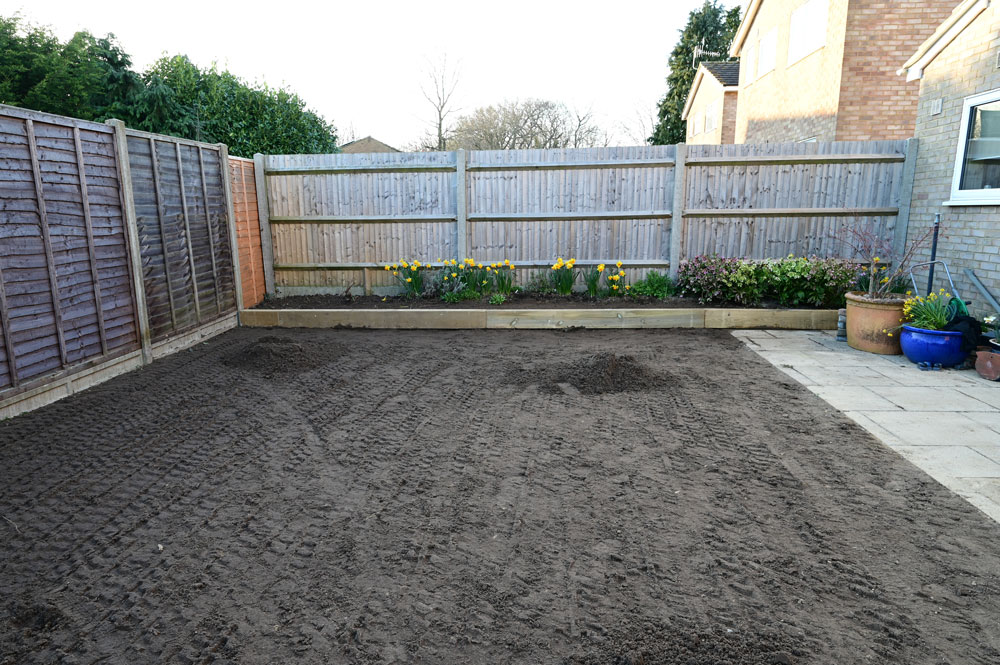Posted: 4th September 2023 | Author: Jamie Brown | Category: Landscaping
Back to news

Sleepers are a hugely versatile resource when it comes to garden features, as they can be incorporated into any number of designs and DIY projects. With a naturalistic, wooden aesthetic, they’re perfect for rustic layouts, and if something more modern is required, they can be painted to fit in. So, how should you lay sleepers for garden edging?
First, you’ll need to plan the layout of your garden borders, as this will naturally influence the size and quantity of sleepers you’ll need, as well as other equipment and components. We recommend sticking to 90° angles in your design, with the end of one sleeper butting up against the face of the next. This makes the task of fixing them together much easier. If your project requires you to cut a sleeper to fit, it’s likely you’ll need a power saw to do this. A hand saw will do the job too, but a power saw will save you time cutting through the thick timber.
With that in mind, here is a basic list of the essentials you’ll need for this project:
These items will enable you to lay your sleepers. Of course, you may need other things, depending on the nature of your project. Sanding your sleepers can be beneficial if the timber is rough and you’re concerned about splinters. If you intend to paint your sleepers or use a varnish, you should do this before laying them. It’s also a good idea to consider adding timber treatments to your sleepers to increase their longevity and protect them against the elements.
Top tip! Make sure the sleepers are fully dry when you come to lay them so that the paint, varnish or treatment has set properly.
Once you have everything you need and you’ve decided on the layout of your sleepers, it’s time to clear the area. Remove any furniture or other items in the way, then dig a shallow trench to remove any turf or weeds. Your trench should be roughly 75mm deep and 50mm wider than your sleepers - this is where your sleepers will sit once the project is complete. Level out the bottom of the trench as much as possible using your spirit level, then add 20 to 30mm of type 1 aggregate. Use a compactor to tamp it down, then check the gradient again.
Why bother with this? Well, you can lay sleepers directly on the ground if you’d prefer to skip laying a sub base, but there are benefits to taking the extra step. Laying a sub base puts a layer of aggregate between the timber and the soil, which can help to protect your sleepers from standing water after a downpour. Aggregate allows the water to drain away from the timber, which could mean your sleepers last longer.
Now it’s time to start laying your sleepers. We recommend doing a ‘dry run’ by laying your sleepers out in place without joining them together at first, so you can make sure your design works as intended. If you’re happy with what you see, you can then move on to fixing the sleepers together to finalise the layout.
Fixing your sleepers together is relatively simple. Make sure the end of one sleeper butts up against the face of the next, and that both are level. Ideally, the edges should line up neatly, but this isn’t strictly necessary. A more untidy finish may add to a rustic appearance, if desired. Whatever you decide, to fix the two sleepers together, all you need to do is drill two landscaping screws into the joint. It may be worthwhile to drill pilot holes beforehand to reduce the risk of the timber splitting.
When adding your screws, your target should be to penetrate the adjoining sleeper by at least 50mm. This means that you’ll have to screw them in further if you’ve laid your sleepers on their wide edges rather than on their narrow edges. Each way has its advantages, but it’s best to be aware that you may need longer screws if you intend to lay your sleepers on their wide edges.
If your plan only involves a single layer of sleepers, you should now have all the information you need to get the job done. If you’re doing several layers, you’ll need to stack your sleepers.
Making sure you overlap with the joint below, fix the sleepers into place by screwing two landscaping screws down into the sleeper below. For a typical lawn or flower bed edge, one or two layers of sleepers should suffice.
Back to news
The Author: Jamie Brown
From my early working life as a labourer, then becoming a builder and a property developer, I have been buying and using building materials for over 25 years. I set about to start a builders merchant which can offer high-quality products and significant savings along with speedy delivery to keep your sites moving. Still having a foot in the construction industry on my own property, I always make sure the products we sell are up to our high standards which is important for us to keep a great image for the company and superior reputation to supply quality!